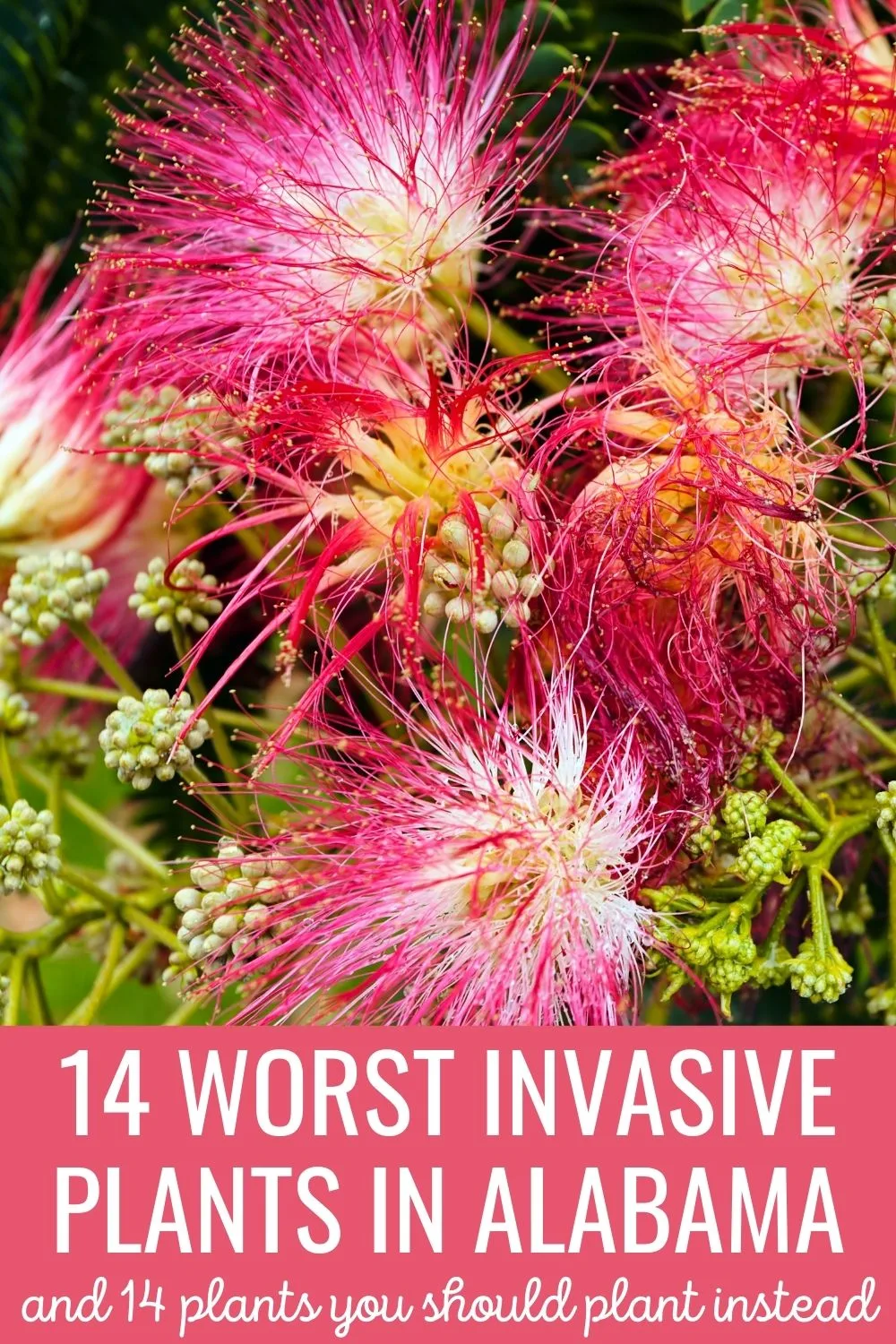About 380 invasive plants have been identified in the state of Alabama. These aggressive plants wreak havoc on native ecosystems, competing with native plants and thus reducing food and habitat available for native wildlife. Invasive plants contribute to the decline of endangered species and also negatively impact human industries, such as forestry. Some of the worst invasive plants in Alabama are listed below.
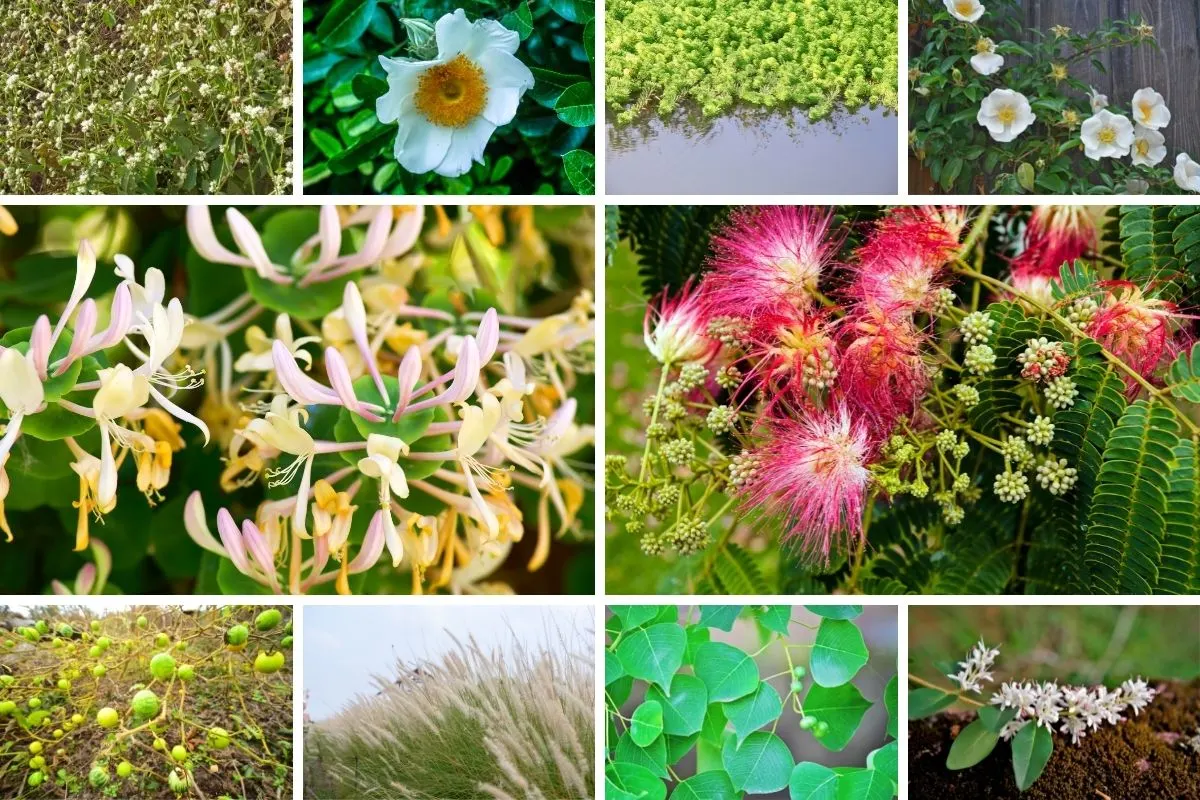
As gardeners, we might discover one or more of these invasive plants in our landscaping, whether we innocently planted them ourselves or find them infiltrating our gardens from other sources. Regardless, as plant stewards, it is our responsibility to eradicate these noxious weeds from our outdoor spaces and thus prevent them from spreading to other areas. Learn more in our handy Invasive Plants Guide.
Invasive Plants in Alabama
Some of the following plants were introduced to the U.S. to reduce soil erosion or for agricultural purposes, while others are purely ornamental. Whatever the original intent, these plants have escaped cultivation to become some of the worst invasive plants in Alabama.
1. Japanese honeysuckle (Lonicera japonica)
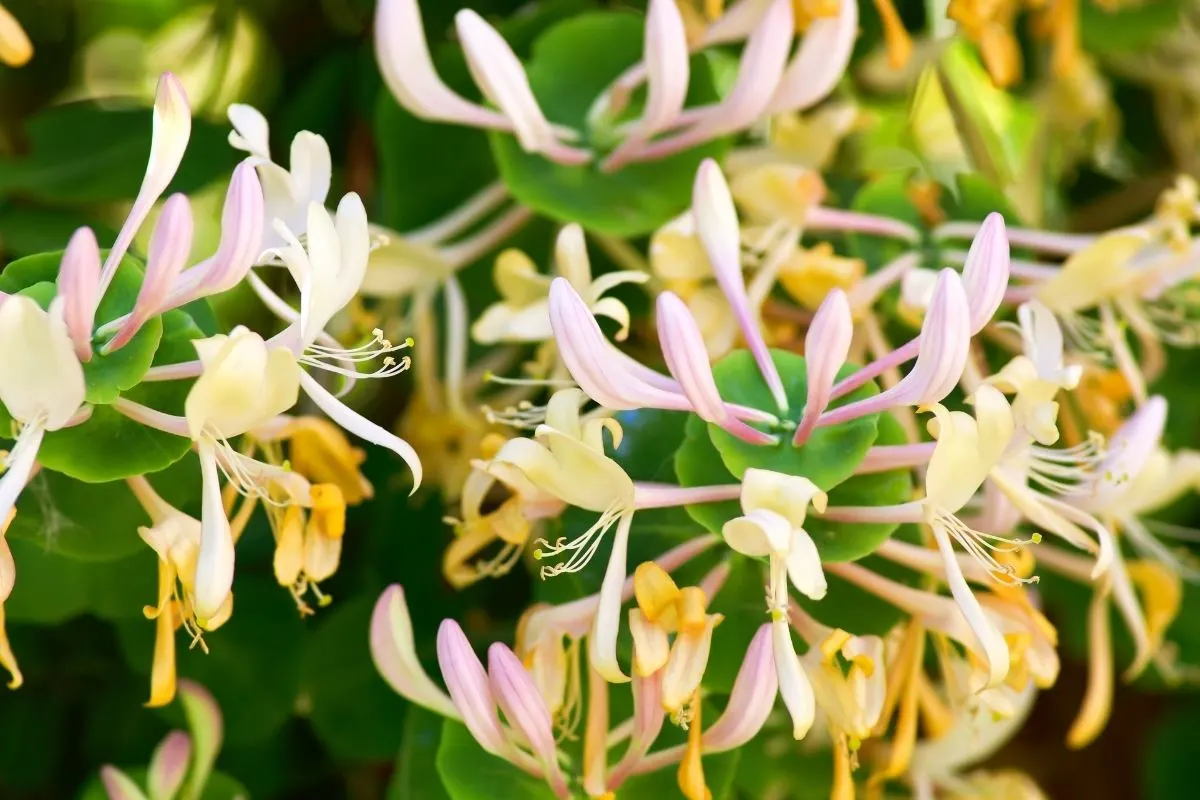
Japanese honeysuckle has been reported in every county of Alabama. This woody evergreen to semi-evergreen vine girdles small saplings and shades out other plants by forming dense mats in the forest canopy. It was first introduced from eastern Asia for erosion control and as an ornamental.
Management methods include hand-pulling seedlings, goat grazing, and repeated mowing combined with targeted herbicide application.
Consider replacing with similar native vines like Carolina jessamine (Gelsemium sempervirens) or virgin’s bower (Clematis virginiana).

Carolina jessamine (Gelsemium sempervirens)
2. Chinese privet (Ligustrum sinense)
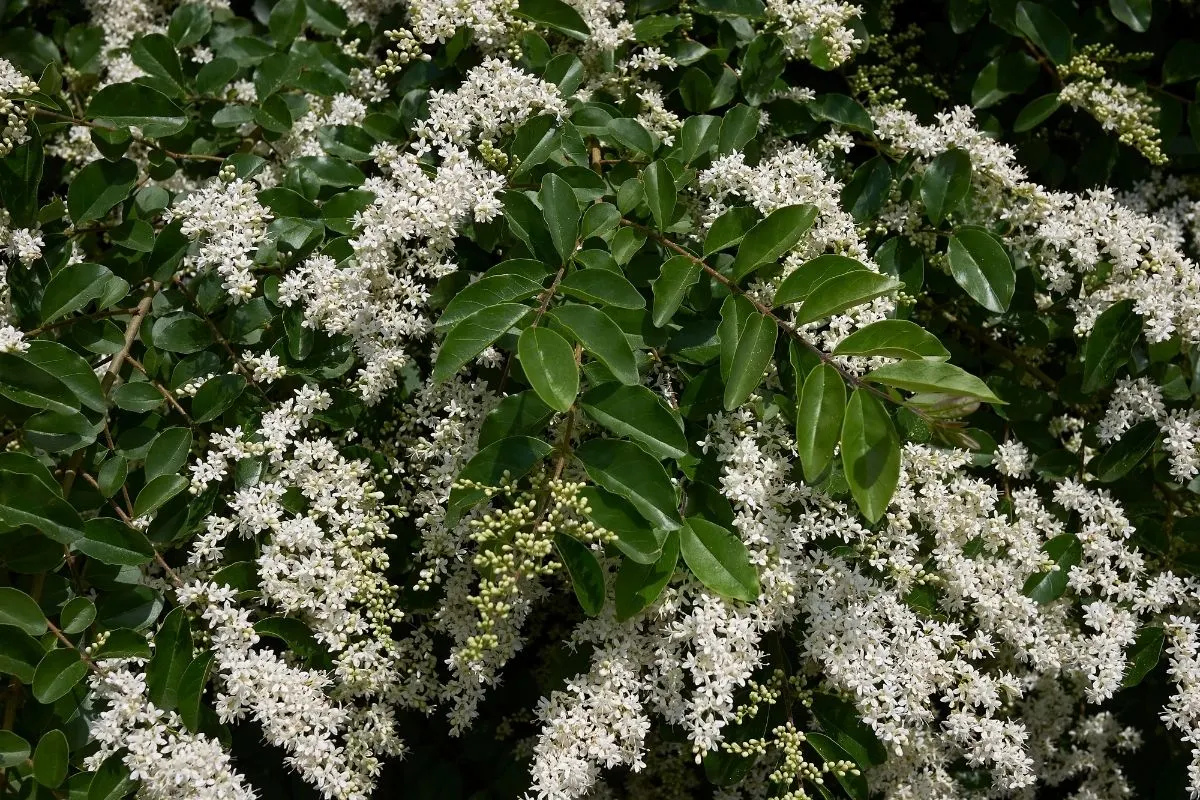
A mostly evergreen shrub, the Chinese privet has been sold as an ornamental hedge species in the U.S. since its introduction from China in 1853. It spreads locally through root suckering, and birds and water move the seeds to new locations. Among other species of privet, Chinese privet invades upland forests, forested creek bottoms, and fencerows in Alabama, displacing native species and preventing forest regeneration.
Privet can be controlled through foliar herbicides as well as cutting and applying herbicide to stumps.
Replace with southern wax myrtle (Morella cerifera) or southern arrow wood (Viburnum dentatum).

southern arrow wood (Viburnum dentatum)
3. Kudzu (Pueraria montana var. lobata)
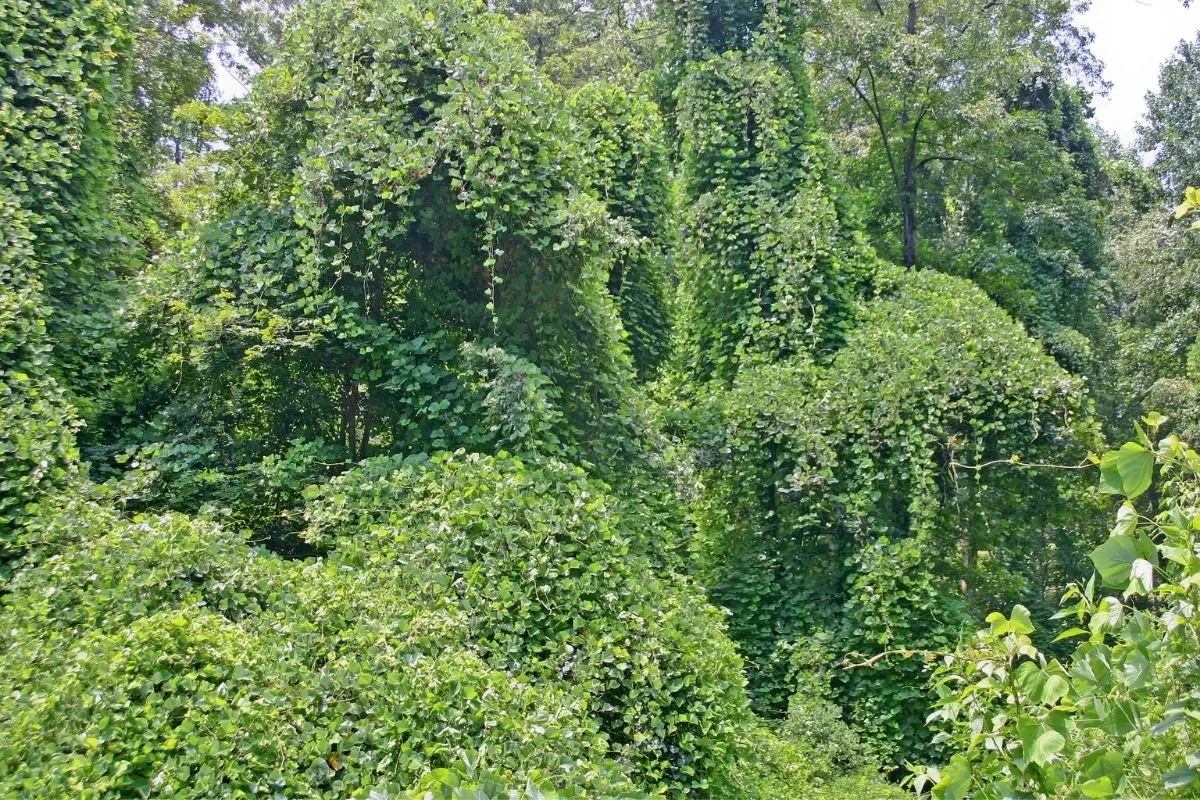
Infamous throughout the southeastern U.S., kudzu climbs as much as a foot in a single day, covering trees, signs, fences, and even buildings. This Chinese vine was introduced in the 1930s to ’50s for erosion control and livestock forage.
Control options include overgrazing, mechanical root removal, and herbicide application.
Choose vines native to Alabama, like Atlantic pigeon wings (Clitoria mariana) or Virginia creeper (Parthenocissus quinquefolia).

Atlantic pigeon wings (Clitoria mariana)
4. Mimosa (Albizia julibrissin)
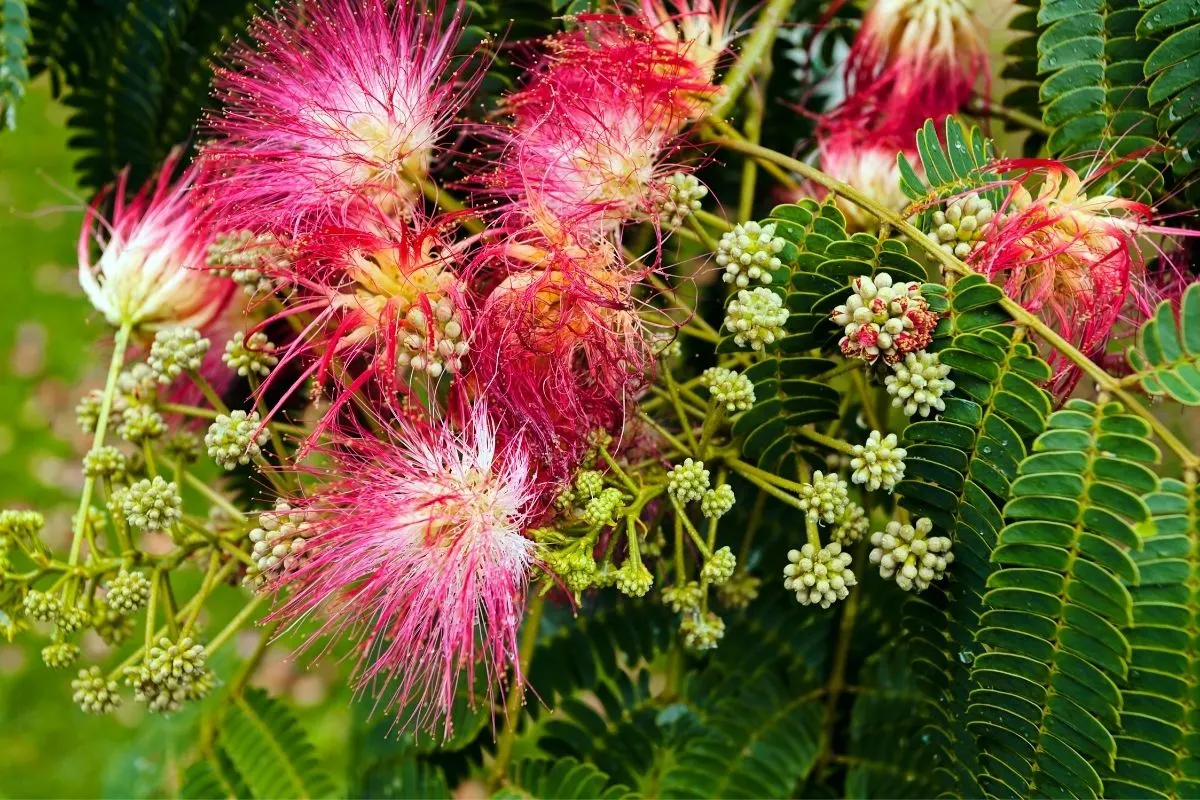
The mimosa, or silk tree, features beautiful fernlike foliage and fringed pink flowers, but unfortunately, it is also highly invasive. An Asian native, it prefers open sites but thrives in a range of conditions. Animals and water spread its seeds, and it colonizes through root sprouts.
Removing mimosas is difficult due to long-lived seeds and sprouting roots. Most effective is repeated cutting, girdling, and/or herbicide application.
Good alternative plants include fringe tree (Chionanthus virginicus) and flowering dogwood (Cornus florida).

flowering dogwood (Cornus florida)
5. Cogongrass (Imperata cylindrica)
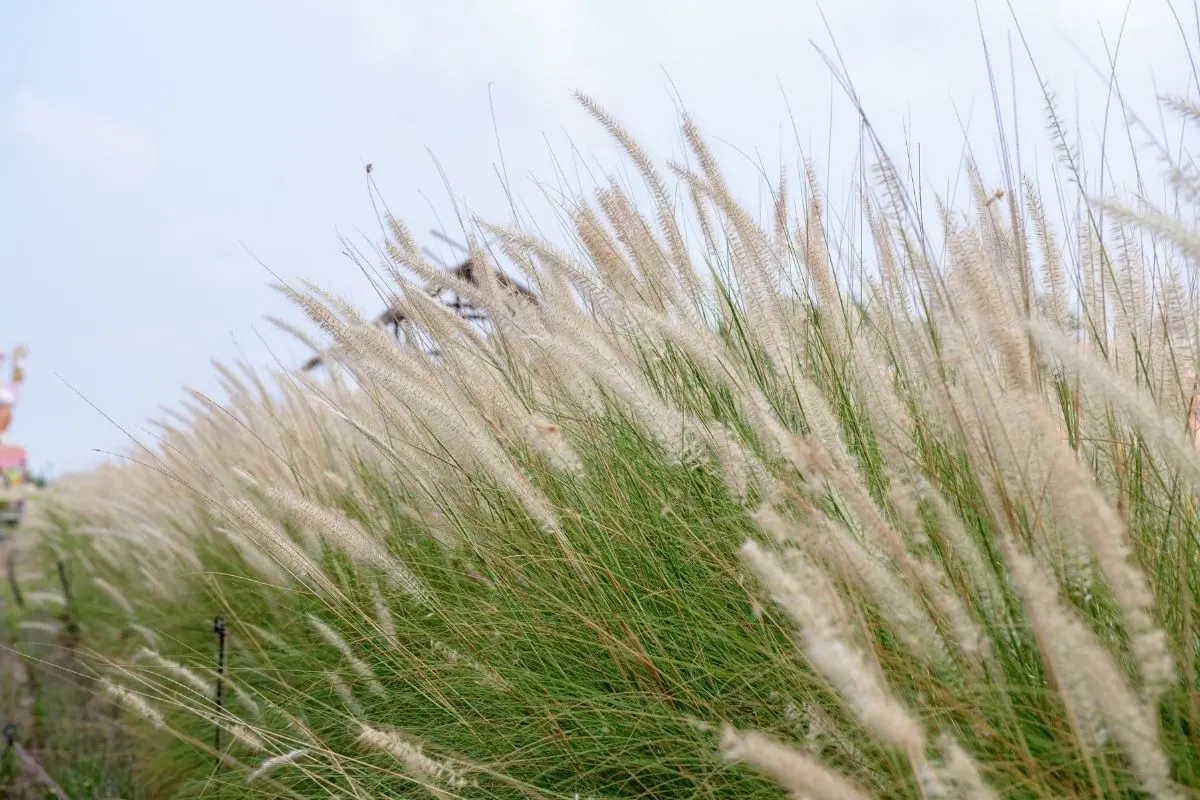
Introduced from Asia in the early 1900s for forage and erosion control, cogongrass forms dense, circular infestations of yellow-green foliage. This highly flammable grass poses a severe fire hazard. It spreads through windblown seeds, horticultural plantings, and contaminated fill dirt, hay, and straw.
The best management method is through repeated herbicide applications.
Attractive native alternatives include bottlebrush grass (Elymus hystrix) and fringed sedge (Carex crinita).

bottlebrush grass (Elymus hystrix)
6. Japanese climbing fern (Lygodium japonicum)
A unique viney fern as the name suggests, the Japanese climbing fern was introduced in the 1930s as an ornamental plant. It dies back each winter, but new spring growth uses old, dead vines as a trellis and eventually cover entire shrubs and trees. Its spores travel through wind, water, and contaminated pinestraw.
Control methods include careful prescribed burns and applications of herbicide.
Replace with trumpet vine (Campsis radicans) or native ferns like cinnamon fern (Osmunda cinnamomea) or lady fern (Woodwardia areolata).
7. Tallowtree (Triadica sebifera)
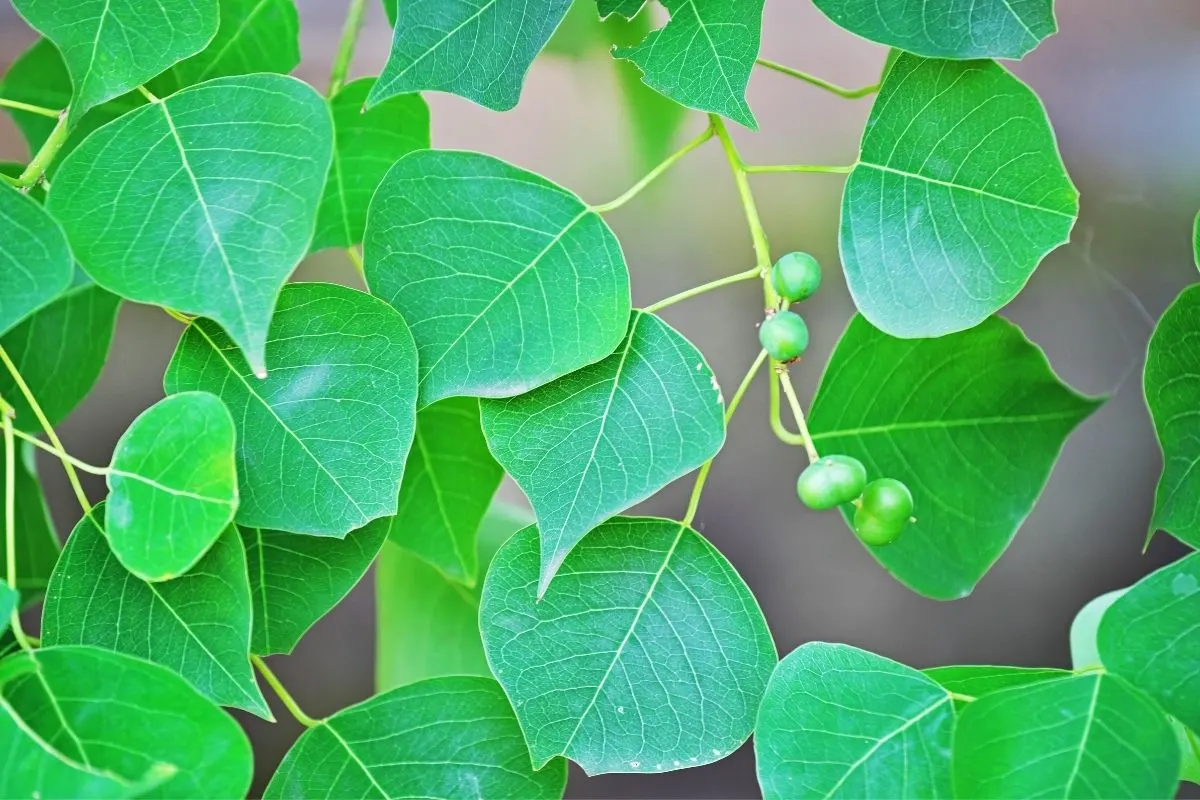
Tallowtree has been in the U.S. since its introduction from eastern Asia in the 1700s but was widely spread in the early 1900s as a (failed) oilseed crop. It has since become a popular landscape tree but unfortunately spreads aggressively.
The best control effort involves a combination of cutting and applying herbicide.
Instead of tallow trees, plant a beautiful native like eastern redbud (Cercis canadensis) or red mulberry (Morus rubra).

8. Tropical soda apple (Solanum viarum)
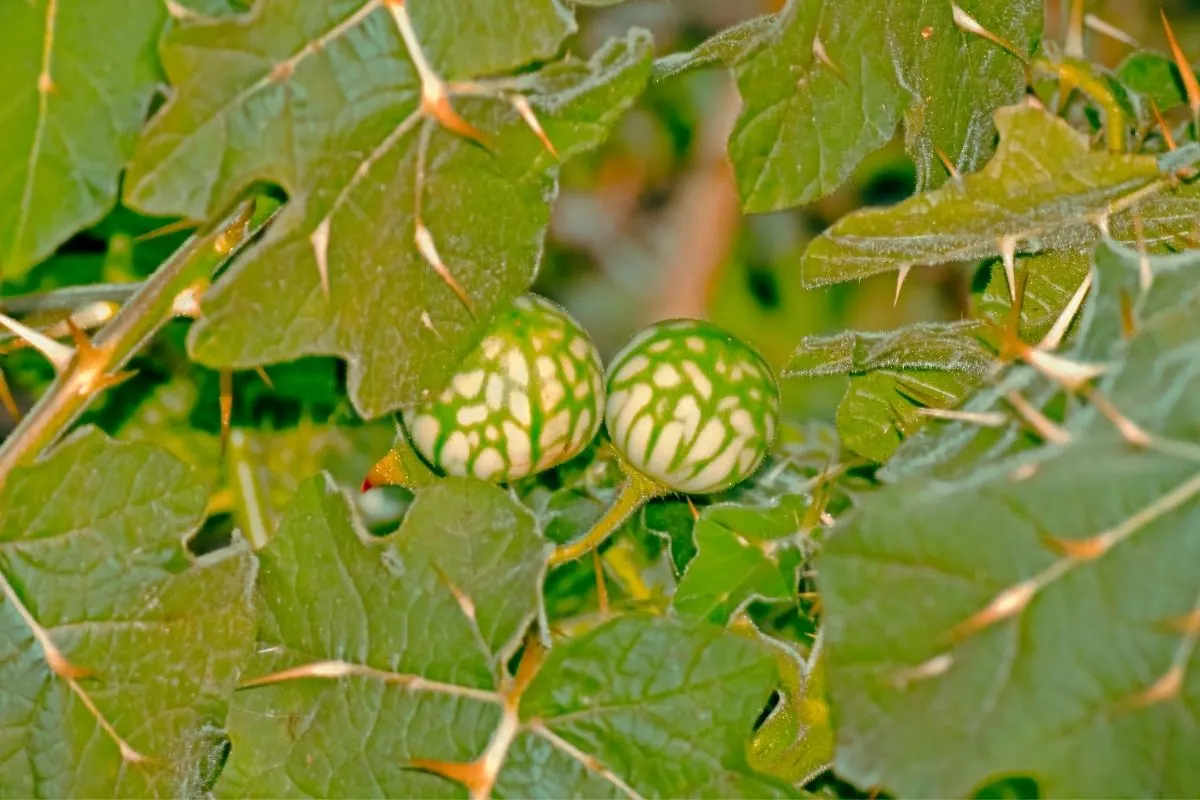
A thorny perennial shrub, tropical soda apple first appeared in Alabama in 1994. This South American native has infested more than 15 thousand acres in the state and continues to spread rapidly, covering entire pastures. It migrates through the movement of infested hay, compost, cattle, and possibly wildlife.
Eradicating this noxious weed requires the application of herbicides over multiple years or mowing before the plants fruit.
Plant instead native oakleaf hydrangea (Hydrangea quercifolia) or silky camellia (Stewartia malacodendron).

oakleaf hydrangea (Hydrangea quercifolia)
9. Multiflora rose (Rosa multiflora)
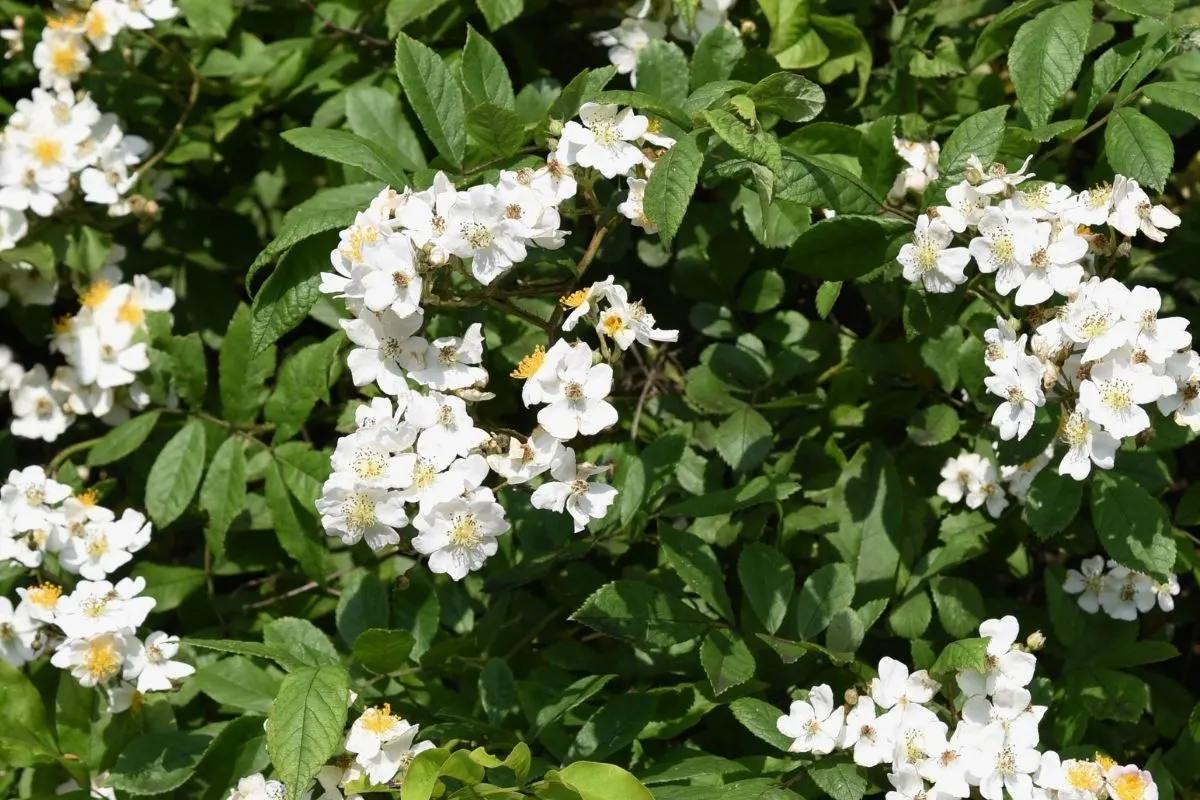
The Asian multiflora rose may be beautiful, but it forms prickly, impenetrable hedges that interfere with land use and choke out native plants. First introduced in 1866 as rootstock for ornamental roses, it was later planted for livestock containment.
Effective management of multiflora rose requires repeated application of herbicides.
Plant other, noninvasive roses instead, or choose similar native plants like halberd-leaved rose-mallow (Hibiscus laevis) or scentless mock orange (Philadelphus inodorus).

halberd-leaved rose-mallow (Hibiscus laevis)
10. Cherokee rose (Rosa laevigata)
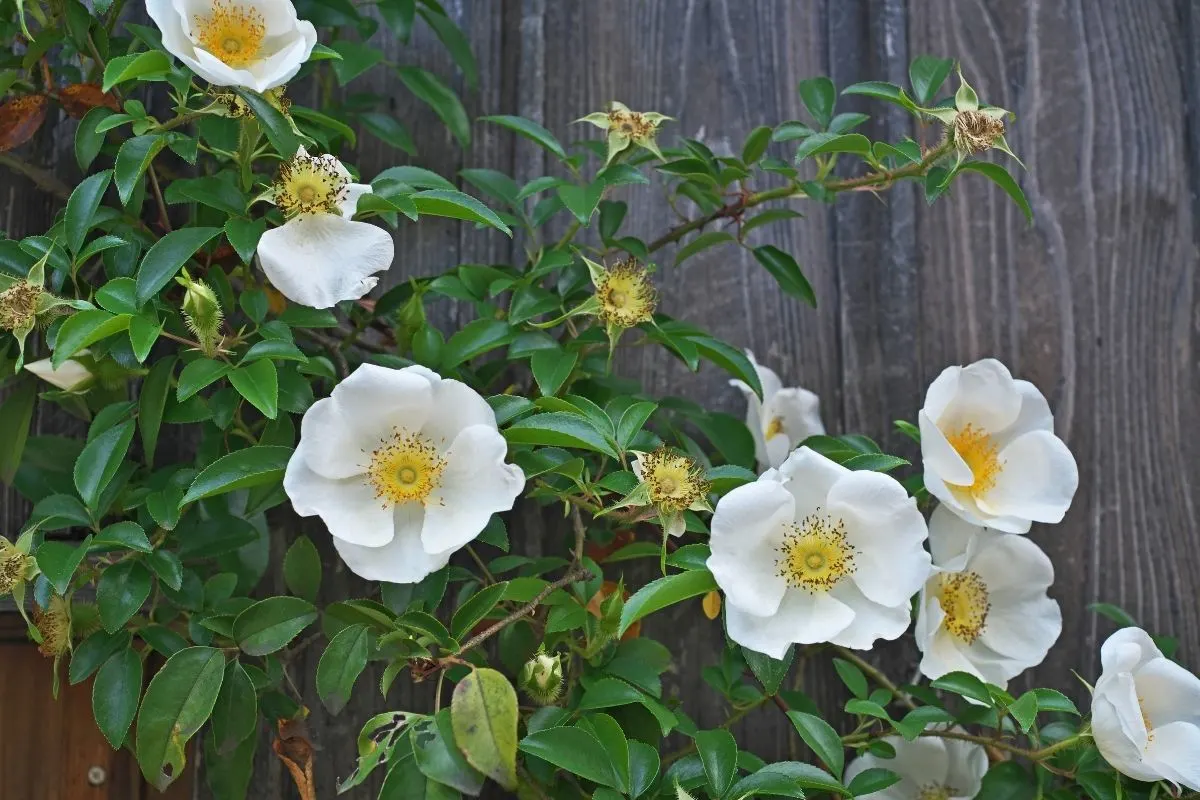
Cherokee rose is especially problematic in the Blackbelt of Alabama, creating thorny barriers along forest edges and in pastures, right-of-ways, and wetlands. Introduced from China in early colonial times, this semi-evergreen became popular among the Cherokee people but unfortunately turned out to be an aggressive spreader.
The most effective control involves repeated herbicide application.
Replace Cherokee rose in the garden with native roses, such as early wild rose (R. blanda) or Carolina rose (R. carolina).

11. Macartney rose (Rosa bracteata)
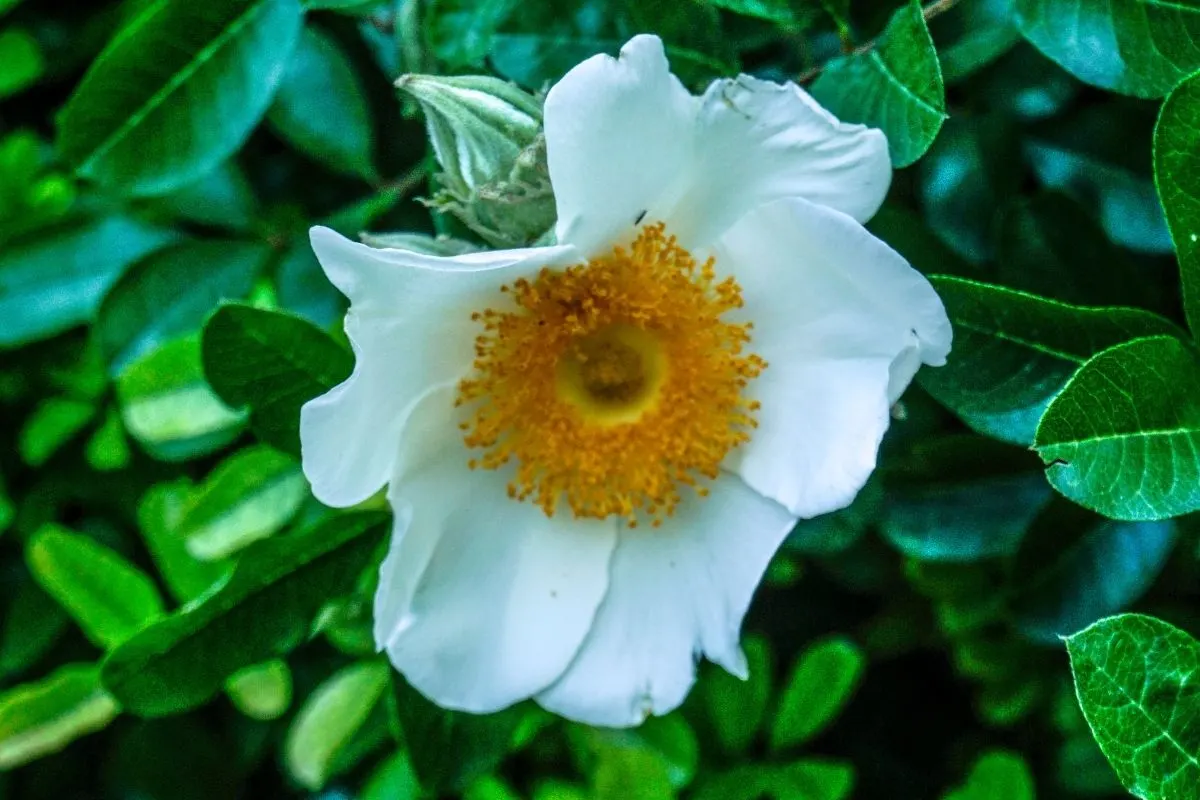
The curved, thorny canes of Macartney rose form dense thickets in pastures and along forest edges, restricting use for livestock and wildlife and displacing native plants. Like multiflora and Cherokee rose, Macartney rose was introduced from China as an ornamental.
Again, management requires multiple herbicide applications.
Choose native roses in place of invasive varieties, like the lovely swamp rose (R. palustris) or Virginia rose (R. virginiana).

12. Eurasian water milfoil (Myriophyllum spicatum)
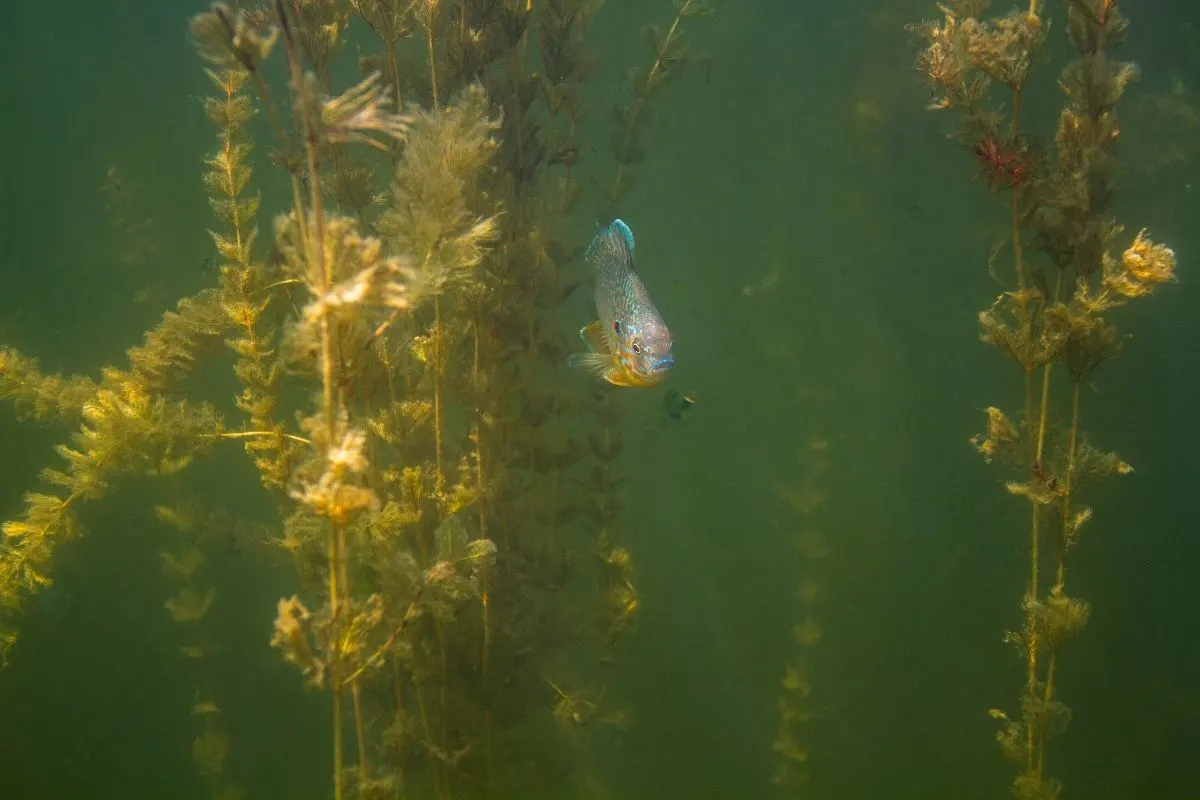
Eurasian water milfoil was introduced to the U.S. in the 1940s as an aquarium plant. This aggressive perennial forms dense mats of ferny foliage, blocking light and destroying habitat in rivers, lakes, and reservoirs. It spreads through seeds and hitchhiking on boats.
Control involves careful application of herbicide.
Similar native aquatic plants include American waterweed (Elodea canadensis) and coon’s tail (Ceratophyllum demersum).

American waterweed (Elodea canadensis)
13. Hydrilla (Hydrilla verticillata)
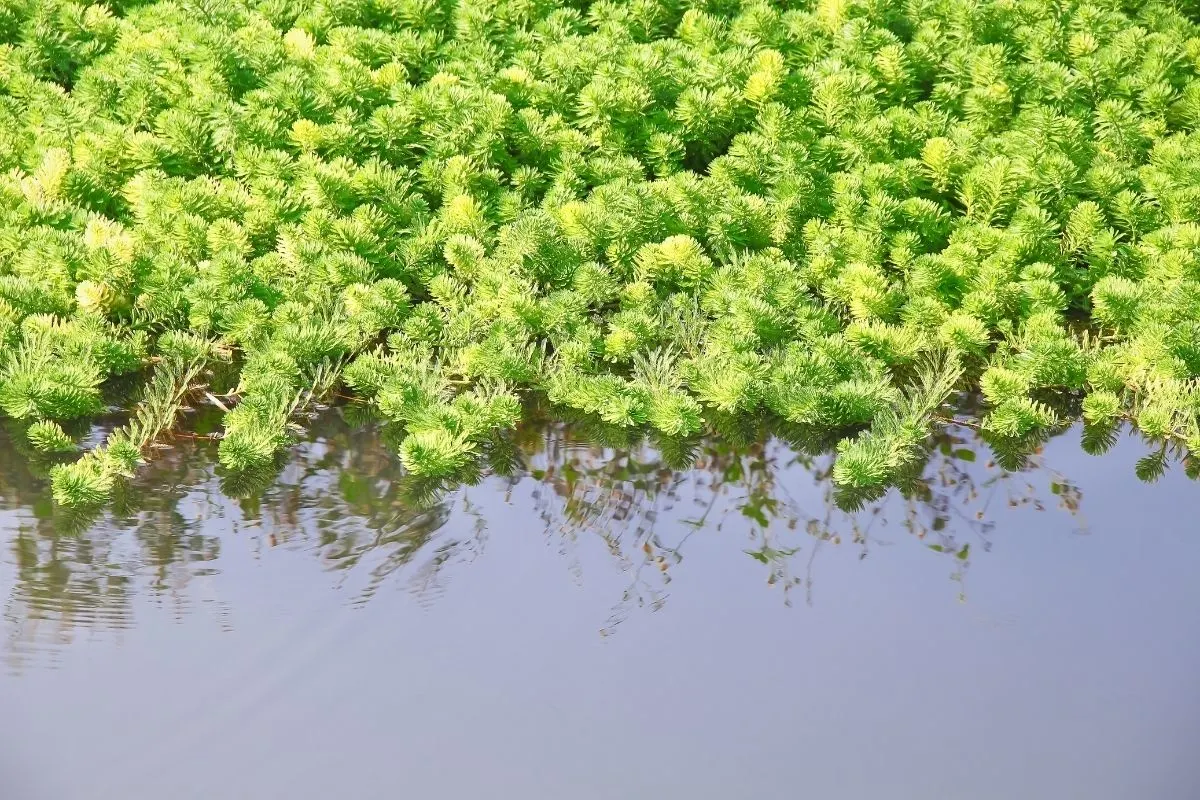
Another aquatic invasive plant, hydrilla came to the U.S. from Asia or Africa in the mid-1900s as an aquarium plant. It crowds out native plants, reduces oxygen, interferes with water flow and drainage, and harbors mosquitos in freshwater ponds, lakes, and rivers.
Careful herbicide applications can help eradicate this noxious weed.
Choose native plants like Nutall’s waterweed (Elodea nuttallii) or water nymph (Najas flexilis).

Nutall’s waterweed (Elodea nuttallii)
14. Alligatorweed (Alternanthera philoxeroides)
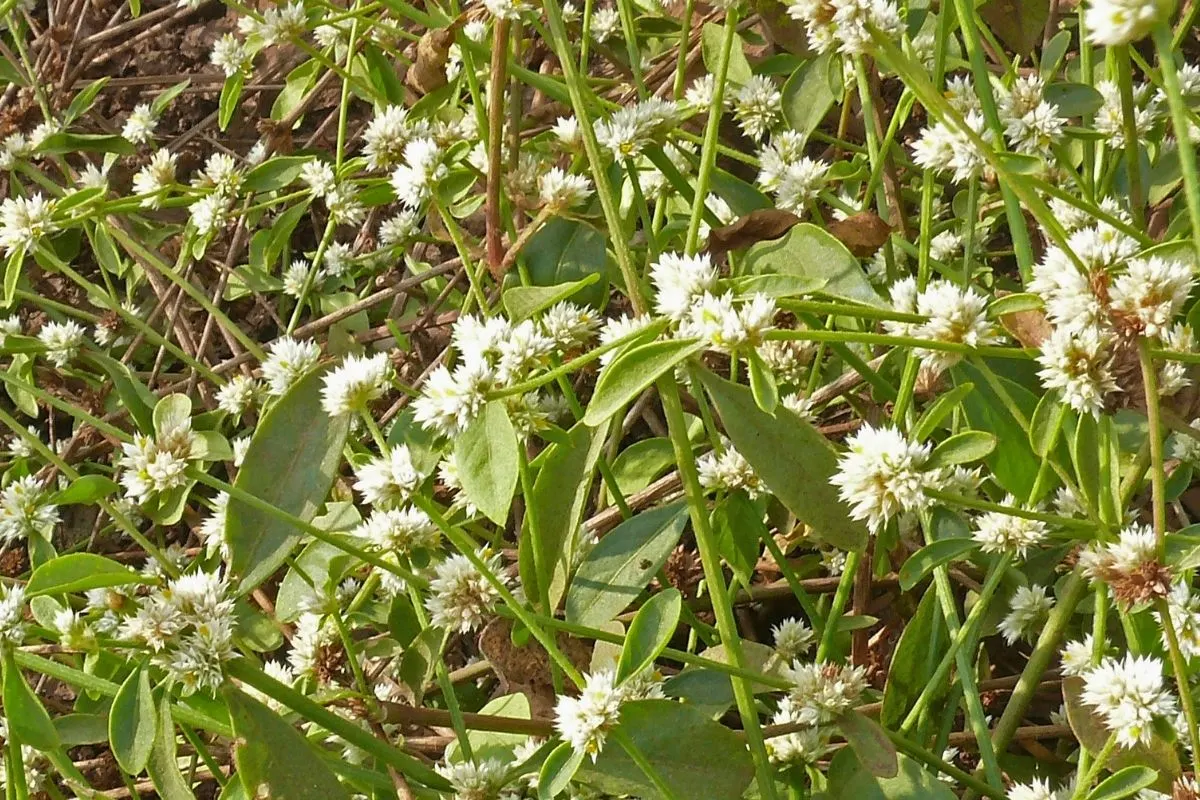
Alligatorweed traveled from South America to the U.S. in ship ballast water in the 1890s. This emergent freshwater perennial forms thick mats in water, wetlands, and low-lying areas. It displaces native plants, results in fish kills, and slows drainage.
A flea beetle offers effective control in southern Alabama; otherwise, management requires multi-year herbicide applications.
American arrowhead (Sagittaria latifolia) and bog bean (Menyanthes trifoliata) are attractive native alternatives.

American arrowhead (Sagittaria latifolia)
With so many invasive plants in just one state, the situation can feel enormously overwhelming. But by starting with your own garden and taking one small step at a time, you can make a difference. Plus, there are also many beautiful native plants in Alabama that you can grow for a positive impact!
